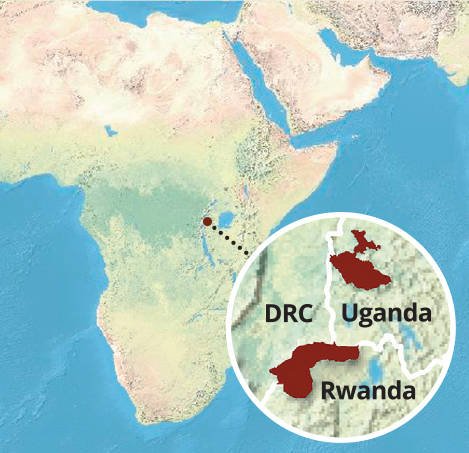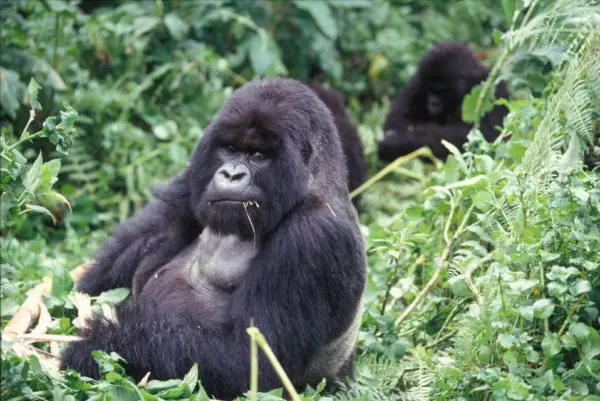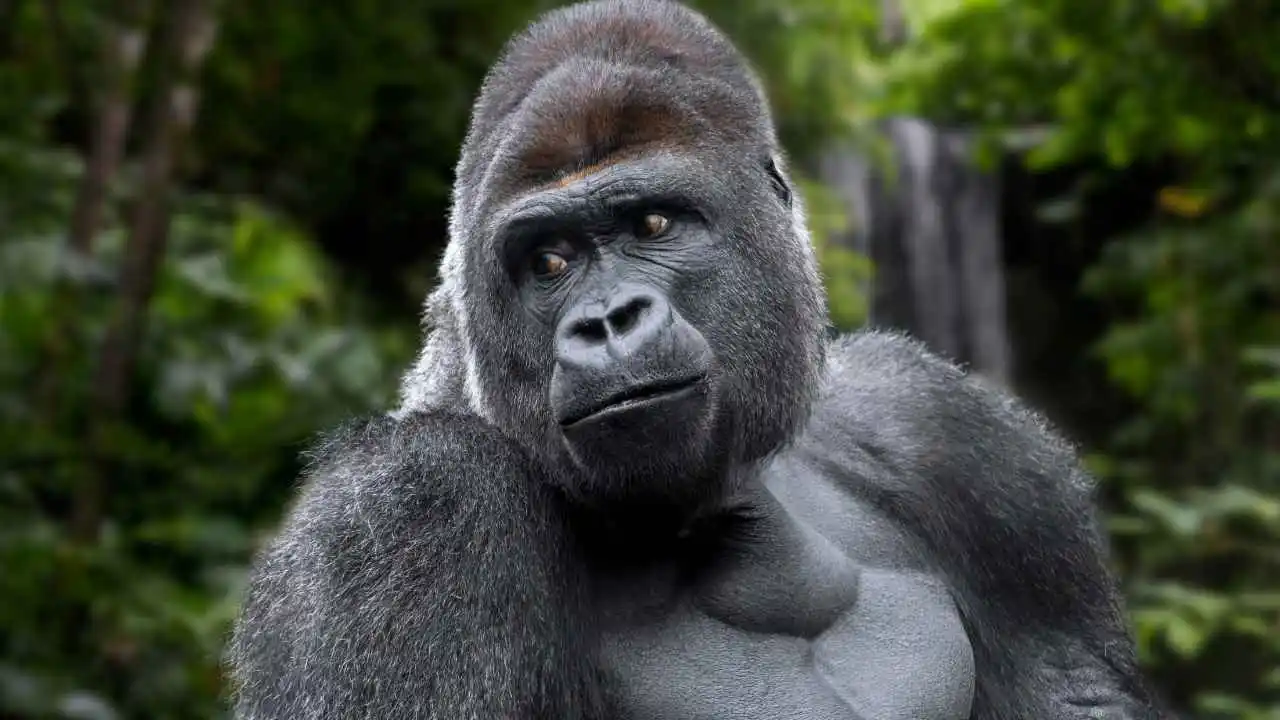Mountain gorillas are an endangered species of primates. They are called mountain gorillas because they inhabit places that are at high altitudes. This might make it obvious that they live in mountains, but there is much more than what meets the eye in this case. Here is some research on the specific places where mountain gorillas are found and why.
Where Do Mountain Gorillas Live
Mountain Gorilla Habitat
- Mountain gorillas are native to the cloud forests of the Virunga Mountains.
- They are adapted to places at such high altitudes because they have thicker fur compared to other primates, and have more of it. This helps them survive in subzero temperatures.
- Also, these volcanic slopes are rich in many types of vegetation, which perfectly meet the food requirements of mountain gorillas (roots, shoots, fruit, wild celery, and tree bark and pulp).
- The Virunga Mountain Range falls into parts of DRC, Rwanda and Uganda. These gorillas cannot survive in captivity, so it is only safe for them to be kept in their natural habitat. This explains why all the conservation centers for mountain gorillas were built in these three countries only.
- One of the biggest threats to the habitat of mountain gorillas is deforestation. When trees are cleared to make room for urbanization, settlements and infrastructure projects, mountain gorillas have no place left to go and they enter lowland regions which are not meant for them.
- Some die of hunger when they don’t find anything to eat, while some enter human settlements and are killed by the people living there. Some become victims of poachers, when they fall prey to traps intended for other animals like antelopes.
Mountain Gorilla Habitat Map

Where Are Mountain Gorillas Found – Mountain Gorilla Location
- Mountain gorillas are not found in the wild anymore. They are so greatly endangered that their total population was estimated to be made up of 1,004 individuals in 2018. That is why they are now confined to national parks where efforts are made to protect them from extinction.
- One group of mountain gorillas lives in the Bwindi Impenetrable National Park in Uganda while the other group is found spread over three national parks in the Virunga mountain region of Uganda, Rwanda and the Democratic Republic of Congo.

Mountain Gorilla Range
- Mountain gorillas do not need to go far from the conservation centers where they are made to live and they can only be found in the national parks mentioned above. That is because they are naturally adapted to live in the volcanic slopes of the Virunga mountain region; it serves all their food requirements and they have thick fur to sustain the cold climate of this area.
Mountain Gorillas Rwanda
- In Rwanda, these gorillas are found in the Volcanoes National Park.
- They are habitual of human presence, so tourists can also access these rare animals safely.
- This wildlife experience – called ‘gorilla trekking’ – is undoubtedly an important source of income for Rwanda, and plays a significant role in bringing about awareness of the fact that these apes are highly endangered and need to be protected.
- Through this activity, people all around the world can participate in the conservation of this species.
Mountain Gorillas Uganda
- The mountain gorilla population of Uganda is spread across Bwindi Impenetrable National Park and Mgahinga Gorilla National Park.
- Bwindi being home to half of the world’s mountain gorilla population.
- Gorilla trekking is also practiced here, especially since the local police began using better security methods, making the place safer for tourism.
- Uganda is famous for holding most of Africa’s undeniable beauty, and it is believed that if not for the conservation methods used at Bwindi to save this species from extinction, mountain gorillas would have died out by the end of the twentieth century.
Congo Mountain Gorillas
- The Democratic Republic of Congo (DRC) is one of the only three countries in the world where mountain gorillas can be found.
- These apes are kept in the Virunga National Park, which is situated in the Albertine Rift Valley.
- Surrounded by cloud forests and volcanic slopes with rich vegetation, this valley is the natural habitat of mountain gorillas, making it an excellent spot to build a conservation center for these primates.
Virunga Mountain Gorillas
- In 1979, the Virunga National Park was placed on the UNESCO World Heritage List because of its remarkable biodiversity. However, due to war in DRC for over 14 years, the government of this country could not pay attention to the park. A rise in poaching of mountain gorillas landed the park on the List of Heritage in Danger in 1994, and its status has remained unchanged ever since.
- The locals depend greatly on wildlife-based tourism for their welfare, but political instability caused a sharp decline in tourism, so gorilla trekking cannot be done.
- Moreover, rebel groups throughout the area put pressure on park rangers, who risk their lives to protect the animals living in the park. The discovery of oil in the area has also threatened the future of mountain gorillas, because that oil is located under a vast piece of land which mountain gorillas live on.
The Best Place to See Mountain Gorillas
- DRC is unsafe, so Uganda and Rwanda are both prime locations for gorilla trekking. Once the trekking trip begins, the tourists are put into groups, each with a tour guide, and they hike uphill towards the place where the mountain gorillas are found. There, the tourists are allowed to spend only an hour with the gorillas, as these apes are habituated to being around humans for very short periods of time.
- Gorilla trekking is thought to be easier in Rwanda due to thinner vegetation as compared to Uganda, where the dense vegetation makes the hike tougher. There is no difference in the climate, as both Rwanda and Uganda are located at the Equator and do not experience any distinct seasons, so trekking can be done all year round.
- The main difference between a trekking trip in Rwanda and a trip in Uganda is that if you choose Uganda, you can pre-book the family you are to meet before you actually begin the tour. In Rwanda, you choose the family on the morning before the hike. Also, the permits in Rwanda are much more expensive than those in Uganda.





Leave a Reply